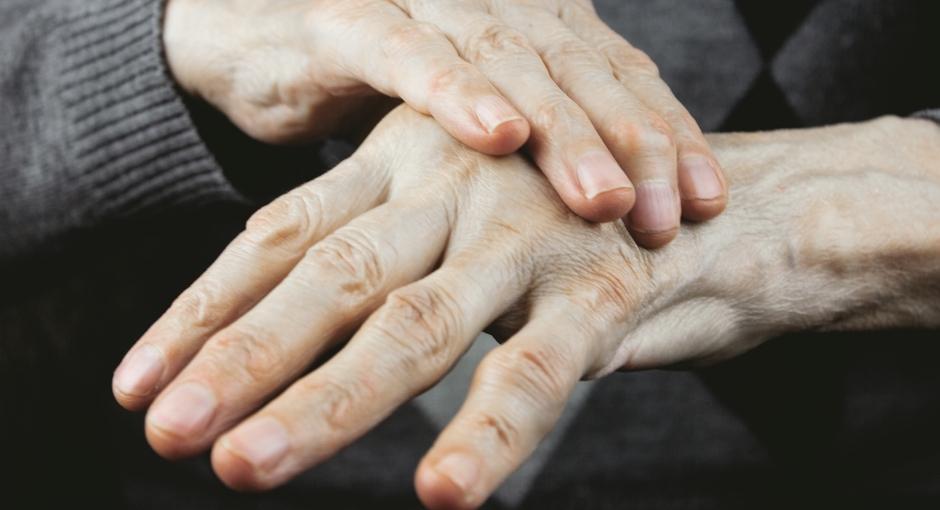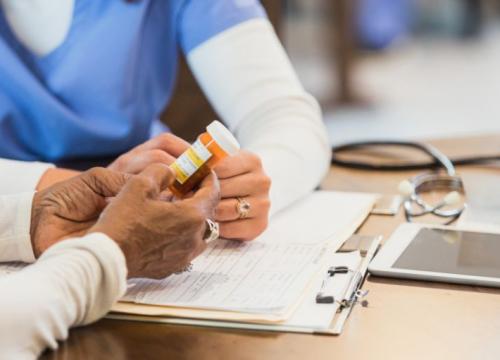Tremor

Tremor is often the first motor symptom of Parkinson’s disease (PD). The typical PD tremor occurs mostly at rest (known as resting tremor) and lessens during sleep and when the body part is actively in use. For example, your hand might shake while sitting, or even while walking, but when you reach out to shake hands with someone, the tremor is less noticeable or goes away entirely. 50% of patients may also present with a tremor that may reoccur with arms stretched outward.
Tremor tends to occur in the hands and is often described as “pill-rolling” (imagine holding a pill between your thumb and forefinger and continuously rolling it around) and/or “supination and pronation” (with the palm facing up and down). However, tremor can also appear in other parts of the body, including the lower lip, jaw or leg. These tremors can interfere with routine activities such as shaving, dressing, writing and many other tasks that require fine motor coordination.
Some people report an internal tremor, a shaking sensation inside the chest, abdomen or limbs that cannot be seen.
Tremor usually start asymmetrically, affecting only one side of the body, especially during early stages of the disease. With disease progression, both sides may become affected. Fatigue, stress or intense emotions can temporarily make tremors worse.
Who experiences tremor?
About 70-90% of people with PD experience a tremor at some point in their lives. Tremor appears to be slightly less common in younger people with PD, though it is still one of the most troublesome symptoms. People with resting tremor usually have a slower disease progression than people without tremor.
Tremor in Other Conditions
While tremor is a common symptom of PD, it can also be a symptom of other conditions, most notably essential tremor. The main difference between Parkinson’s tremor and most other types of tremor is that in PD resting tremor is most common. Other conditions are usually characterized by “action tremor,” which tends to lessen at rest and increase when you’re doing something, like trying to make a phone call or take a drink. Tremors of the head and voice are also common in essential tremor but rare in PD.
Managing Tremor
Levodopa is the medication most commonly given to control the movement symptoms of PD, and tremor usually — though not always — responds to levodopa treatment.
If dopaminergic medications (those that stimulate the parts of the brain affected by dopamine, a chemical necessary to controlled movements), such as levodopa, do not work to control tremor, other medications are sometimes used. For example, anticholinergics can be helpful for tremor. These medications improve Parkinson's symptoms by blocking the brain chemical acetylcholine. However, they can cause significant mental and physical side effects, so their use should be carefully considered. Anticholinergics are most useful in young people with tremor-predominant PD (when tremor is the main symptom that needs managing).
If medications are not effective, surgical interventions, such as deep brain stimulation (DBS), and focused ultrasound (FUS), can be effective in controlling tremor, even medication-unresponsive tremor. Talk to your doctor about DBS and other surgical options that may help with tremor.
The treatment for internal tremor is the same as for visible tremor.
More Information
Read our guides for more information on medications and DBS for tremor.
In addition to medication and surgical treatment, there are assistive devices that can help with various activities of daily living. One of these is Liftware, a utensil with a stabilizing handle to counteract PD-related tremor. It is available with spoon and fork attachments and helps steady the hand, so it can make it easier to scoop up food and bring it to the mouth.
Last but certainly not least, exercise is as important as medication and other therapies for managing Parkinson’s symptoms and leading your best possible life.
Page reviewed by Dr. Jun Yu, Movement Disorders Fellow at the University of Florida, a Parkinson’s Foundation Center of Excellence.
Related Materials
Related Blog Posts

Resting Tremor and DBS. Sooner Better Than Later?

We Answer the Most Frequently Asked Helpline Questions
